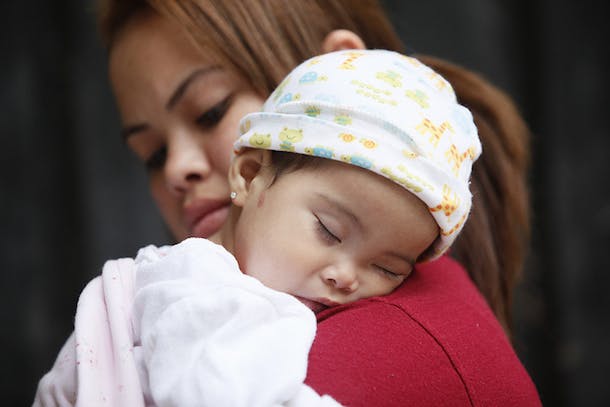 Photo/Stuart Ramson
Photo/Stuart Ramson
“Women’s rights are human rights,” said then-First Lady Hillary Rodham Clinton in 1995 at a United Nations conference in Beijing.
As a mother and advocate for children’s health, I can’t separate women’s rights from a mother’s rights. In the 20 years since the Beijing Declaration and this historic statement, the world has seen amazing progress in the advancement of mother’s rights and their ability to protect their children through the development of life-saving vaccines.
We have seen the introduction of rotavirus and pneumococcal vaccines in the world’s poorest countries, providing protection from two of the largest killers of children: diarrhea and pneumonia. Polio has all but been eliminated, remaining endemic in just three countries. And a drastic decrease in measles-related deaths can be attributed to the introduction of the measles vaccine.
Vaccine-preventable diseases disproportionately affect women and girls. As we look forward to 2030, I see enormous opportunities to expand access to life-saving vaccines for children around the globe and provide mothers everywhere the opportunity to see their children grow and prosper.
How do we shape our world to ensure every mother has access to life-saving vaccines for her children? Together and one step at a time.
The United Nations Foundation’s Shot@Life campaign was established to provide Americans the opportunity to advocate for change and expand access to life-saving vaccines for our world’s most vulnerable children.
Every year, 1.5 million children die from vaccine preventable diseases. Yet, immunization is available as a proven safe, cost-effective solution. We must work together to increase access to vaccines for children and mothers around the world. In areas like the Philippines, where more than 100 children have already died this year from measles-related deaths, we can support vaccination efforts for as little as $2 per child.
I envision a world in 2030 where we celebrate a mother’s rights and no single child is lost to a vaccine-preventable disease. I envision a world where a mother will have a shot at dreaming of her child’s future.



 View All Blog Posts
View All Blog Posts